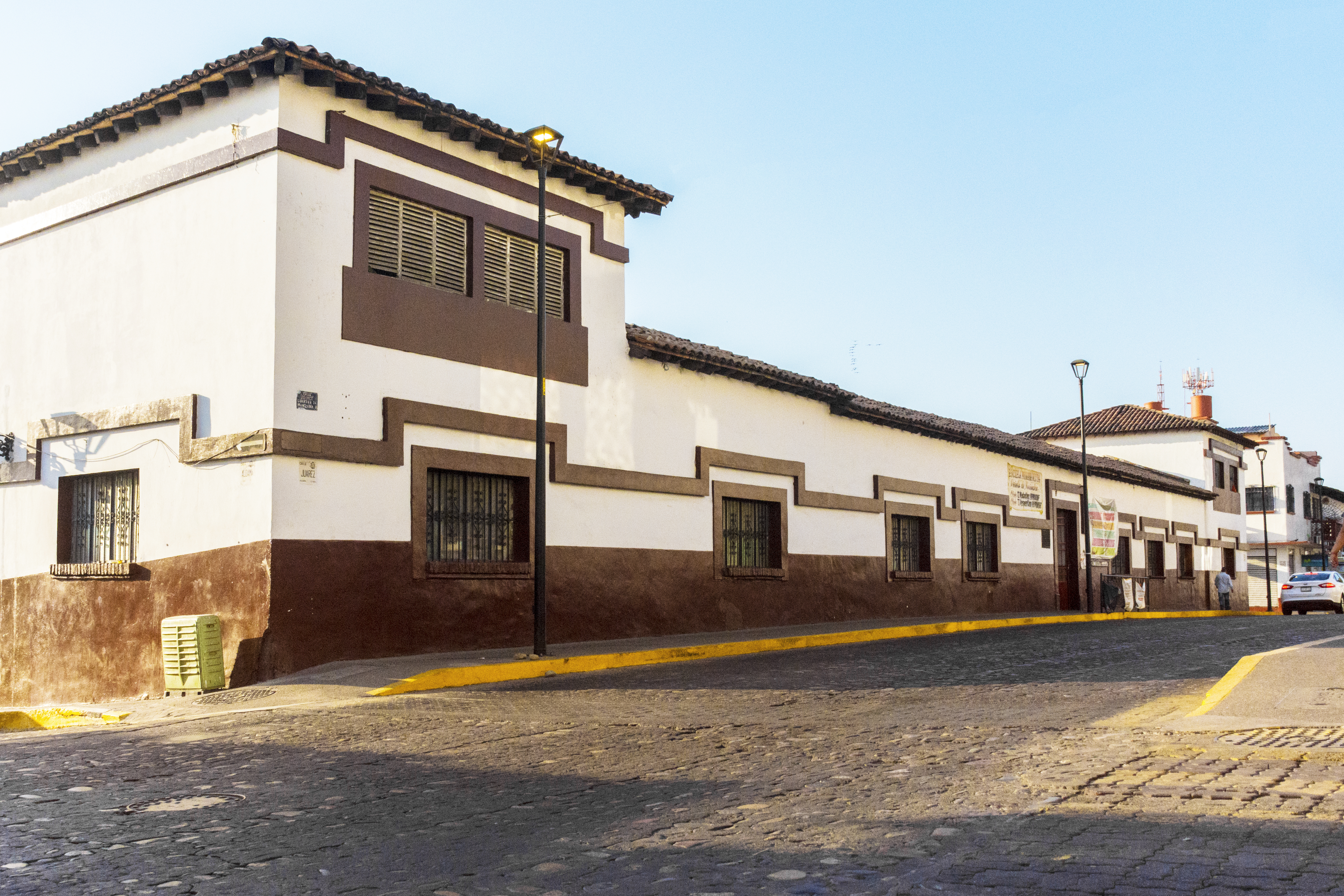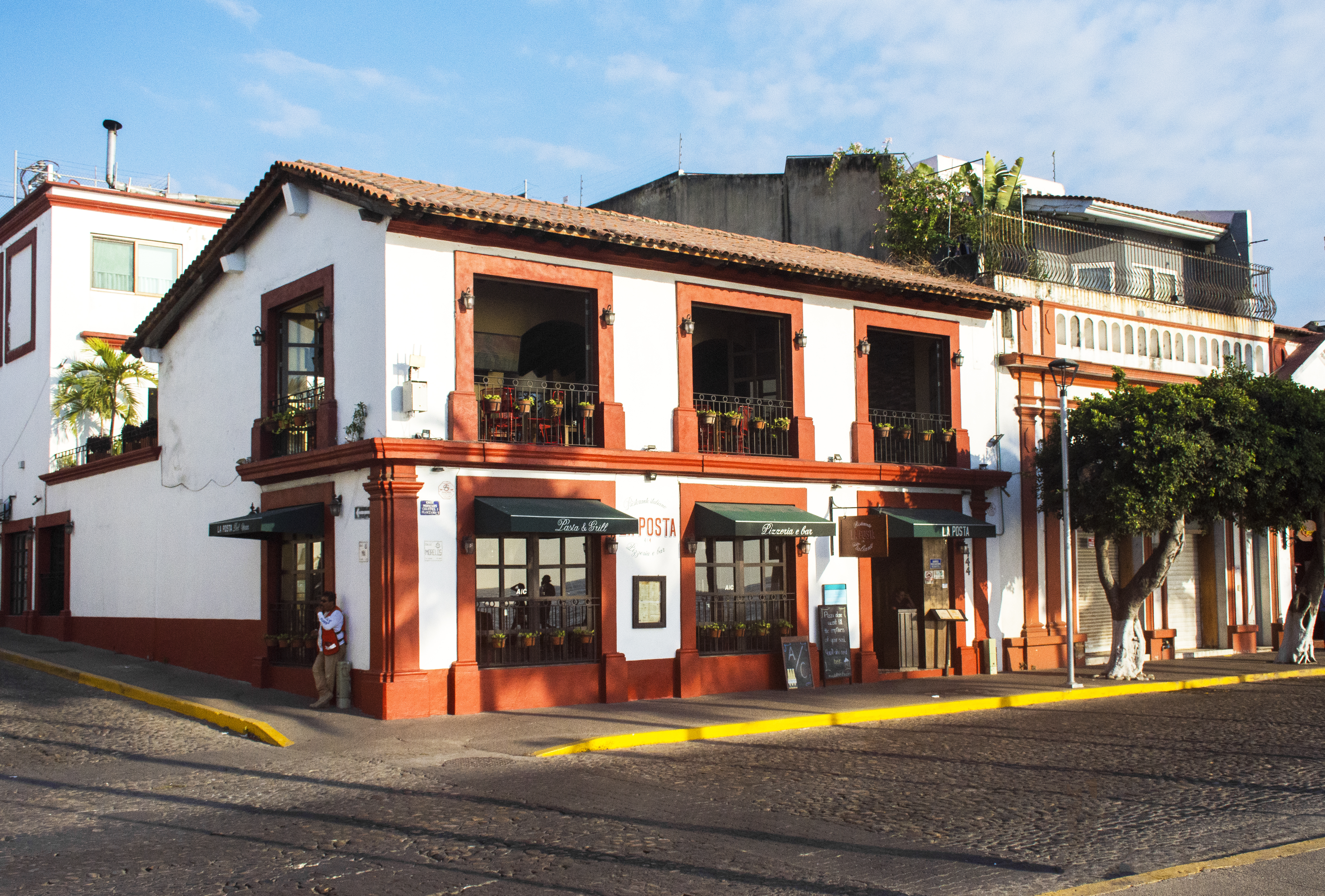History of Puerto Vallarta Architecture – Part I
Puerto Vallarta just celebrated 50 years as a city and 100 as a municipality. However, its founding goes back even more decades, as reflected in the city’s architectural wealth. From the first buildings, belonging to so-called serrana (highlands) architecture, to the current contemporary-style developments, this tourist destination has experienced an interesting urban evolution, a transformation that we will analyze chronologically in a series of three special articles.
To explore these more than 150 years of history through emblematic styles and buildings, we approached architect and researcher Alfonso Baños, as well as architect and urban planner Óscar Morán, experts in the urban architectural history of Puerto Vallarta who have published extensively and produced presentations on the subject, such as the highly recommended and informative YouTube documentary series Entre Muros.

Pioneering Construction: Serrana Architecture
Although previous settlements have been documented, Puerto Vallarta was officially founded in 1851, when iconic figures such as Guadalupe Sánchez Torres and other families from nearby mountain municipalities (such as San Sebastián del Oeste, Mascota and Talpa de Allende) decided to settle in this enclave of Banderas Bay, bringing with them their customs, among them, the way to build. “At that time, architects did not exist as such. The first school of architecture was founded in Mexico well into the 20th century. And although there were schools of engineering, construction knowledge in small towns was passed down for generations: families of blacksmiths and masons who knew how to build with a lot of beauty,” stresses Morán.
Our serrana architecture stands out for its rustic and traditional look, maintaining the essence of colonial towns, with the peculiarity that Puerto Vallarta employs that highland style at the beach. Alfonso Baños points out the most visible characteristics: “The streets intersect perpendicularly, in a grid pattern, the roads paved with materials from the region, such as cobblestones, which helped the transit of horses and later vehicles. Other distinguishing features include the sloping clay-tile roofs, adobe walls, narrow, vertical windows with small balconies, plus the use of wood for beams, as well as thick doors and shutters.”
The buildings indicated the status of their inhabitants. “The most important had corner lots, and aesthetically marked the importance of housing to the fabric of the city,” adds Baños. “There were three predominant colors in town: the gray of the pavement, the white of the walls and the red of the roofs, enhancing the surrounding vegetation. In addition, their heights were proportional to the width of the streets.”
Among the most significant examples is the building that now houses El Campanario restaurant (between Independencia and Hidalgo streets), as it still has the original roof, adobe walls, facade and windows, as well as interior patio with a well. Other properties that stand out are the Milano building (between Juárez and Galeana streets), whose exterior preserves the serrana style. The old post office building (now La Posta restaurant), whose windows were modified, still maintains the cornices, tile roof and thick adobe walls. An example of late serrana architecture is Escuela 20 de Noviembre, which although built in the ‘30s with some modern elements, was made in accord with serrana architecture. “If you compare the architecture of San Sebastián del Oeste with these buildings—with their respective modifications—you will see many similarities,” says Morán.
One Hundred Years in a Rustic Bubble, with Some Exceptions
Because the town was isolated from the rest of the country, serrana architecture predominated in Puerto Vallarta for almost a hundred years. “While in places like Mexico City and Guadalajara, the new European or American styles had arrived, not here. Even if they arrived, these styles required elements and resources that could not be obtained here. Puerto Vallarta had no road connections—only maritime—and it was only in the ‘30s that air access arrived. Here you could only build with adobe, brick and wood, materials available in abundance,” says Morán.
Despite the omnipresence of serrana architecture, two of the city’s iconic buildings are an exception and deserve special mention.
The Church of Our Lady of Guadalupe took a long time to build and does not belong to any particular style. Morán comments that 1921 is the officially recognized beginning, although construction had already begun on the foundation, support columns and walls in 1903 (the year the Diocese of Tepic granted Puerto Vallarta permission to have a parish, not a cathedral, as it is erroneously called). The project lasted until 1965, when the crown was placed on the central tower (the first of three it has had). And in 1985 the two side belfries were added.
Regarding its style or mixture of styles, Morán comments that it has “neoclassical inspiration, although it lacks the characteristic depuration. It really is rustic in its exterior finish, mainly brick and concrete support columns reinforced with steel rods and some stone to give it a more colonial touch. The church never had an architect in charge of the project as a whole; it was built based on the ideas of each era, and the construction technique reflects the technologies that existed when it was carried out.”
The other jewel is the Teatro Saucedo (between Juárez and Iturbide streets), designed by Italian engineer Angelo Corsi and built in 1922 with advanced techniques, such as the use of steel beams (something unprecedented in the city). His style, which emulated the theaters and large buildings of Mexico City and Europe, was a model of sophistication and reflected what was sought by the bourgeois classes of the time, thus becoming Puerto Vallarta’s first center dedicated to culture and social events.
Despite these two rarae aves, Puerto Vallarta maintained its distinctive appearance for several decades, the charm of a “little Mexican village” sustained until the arrival of the first foreign visitors at the end of the 1930s. However, it wasn’t until the 1940s that these changes would be reflected in the architecture of Vallarta, with the arrival of the first modernism movements, which you can see in Part II of the History of Puerto Vallarta Architecture.

